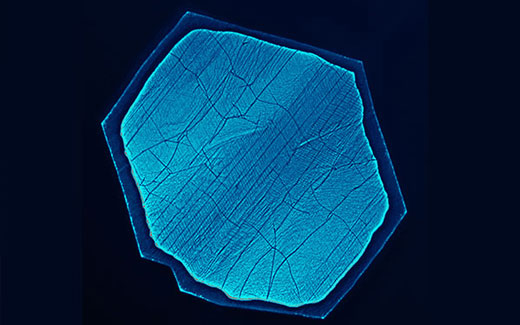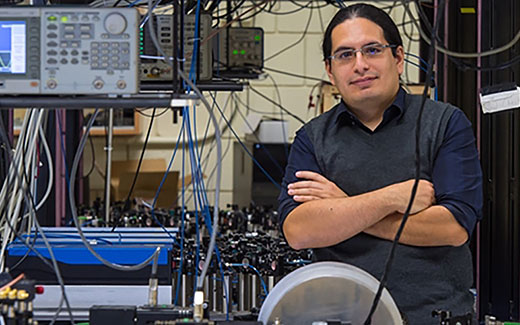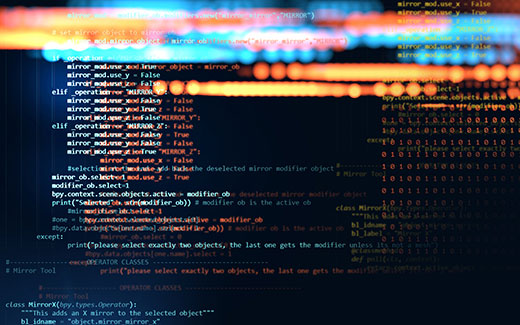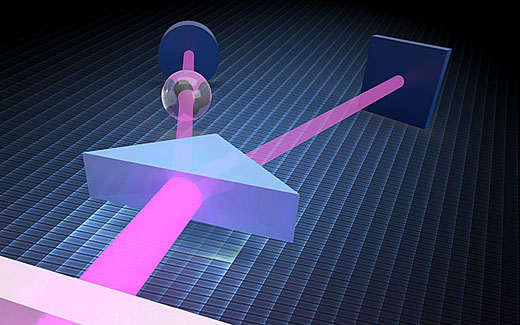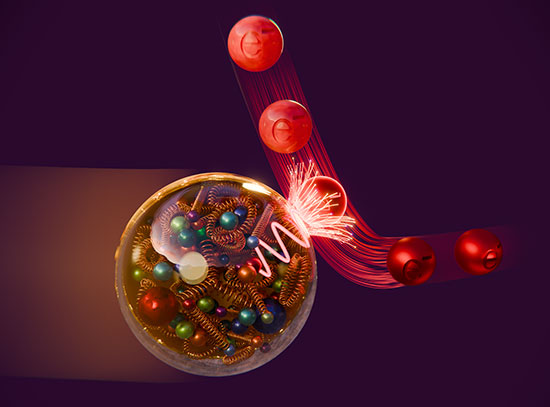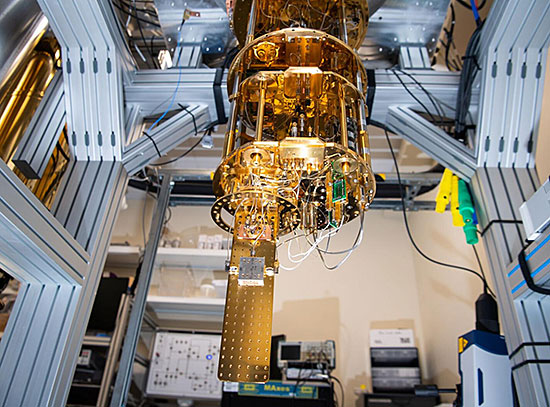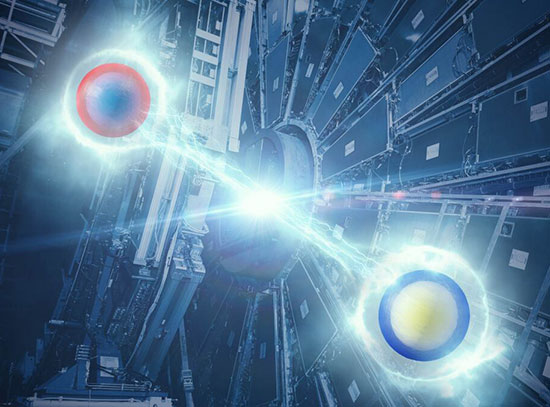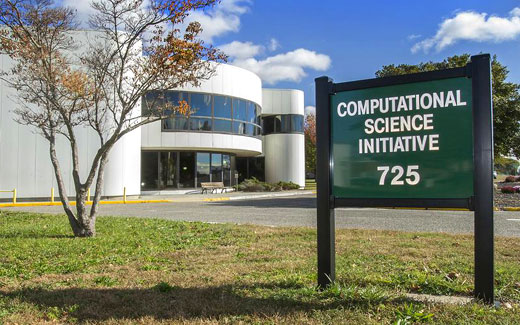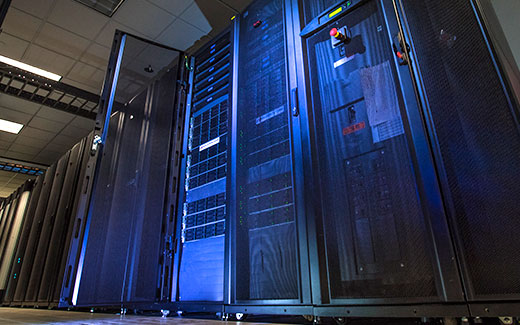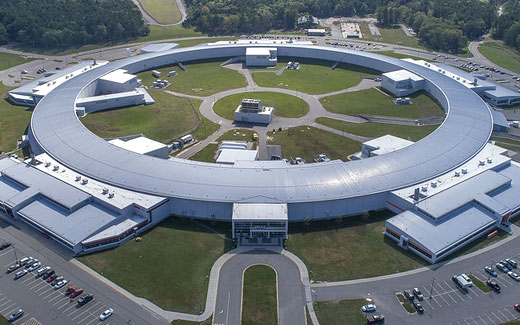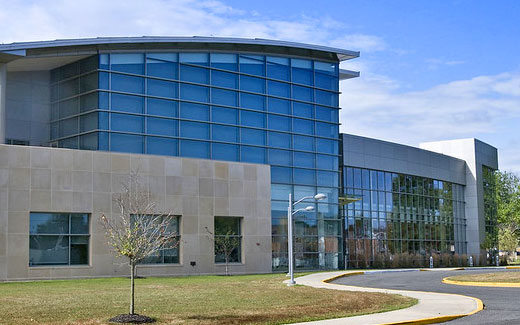
Quantum
Pushing beyond classical physics to transform technology
Brookhaven Lab is executing a cross-disciplinary strategy to harness quantum effects in physics for advanced computing, communications, and fundamental science. From developing new quantum technologies to integrating quantum capabilities into existing world-class facilities, quantum is at the forefront of all research areas at Brookhaven Lab.
Quantum materials exhibit unusual magnetic and electrical properties, such as superconductivity—the ability to conduct electricity with zero resistance. Brookhaven scientists are working to discover the next generation of quantum materials and characterize their unique properties, driving advancements in qubits for quantum computing and more efficient electronics.
Brookhaven Lab and Stony Brook University are working together to bring the vision of a quantum internet into reality, enabling completely secure communications online. The team has built the Nation’s longest quantum network, which spans 98 miles and connects the institutions’ two campuses. Researchers at Brookhaven are also developing a quantum repeater prototype to ultimately connect the Lab to New York City.
Computational scientists at Brookhaven Lab are developing quantum algorithms that will enable new types of scientific calculations—ones not possible to perform on traditional computers, such as advanced simulations of the early universe. One special focus of this work is quantum machine learning, in which quantum algorithms are applied to artificial intelligence for the rapid analysis of large data sets generated by physics experiments such as the Deep Underground Neutrino Experiment and the High Luminosity Large Hadron Collider.
Brookhaven Lab is applying its expertise in quantum technologies to overcome the current limitations of scientific experiments and measurements, integrating new quantum capabilities and instruments into its existing facilities. These projects include the Quantum Material Press, quantum telescopes and astrometry, quantum LIDAR, and a quantum-enhanced microscope.
Related facilities and centers
Co-Design Center for Quantum Advantage
One of five National Quantum Information Science Research Centers awarded by the U.S. Department of Energy, the Co-Design Center for Quantum Advantage (C2QA) is building the fundamental tools necessary to create scalable, distributed, and fault-tolerant quantum computer systems. Led by Brookhaven Lab, C2QA comprises more than 20 institutions, including National Labs, research centers, universities, and industrial partners. By designing software and hardware in tandem, the C2QA team is working toward achieving quantum advantage—the point at which a quantum computer outperforms a classical one on a useful task—for computations in high-energy and nuclear physics, chemistry, materials science, condensed matter physics, and other fields of science.
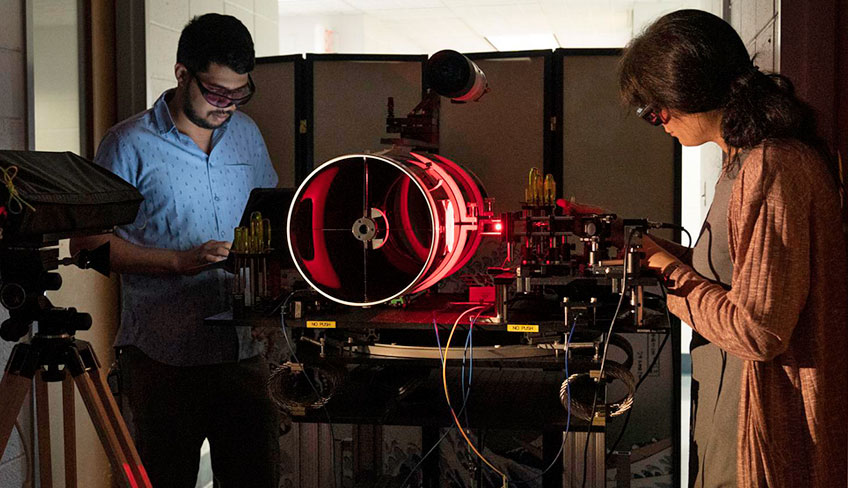
Quantum Network Facility
Brookhaven Lab's Quantum Network Facility is an experimental facility open to the user community. Experimental opportunities are focused on the development of foundational quantum devices, including entanglement generation and detection, and characterization of quantum memories with a focus on scalability. As one of the key components of our efforts, the facility provides the possibility to integrate these building blocks with existing real-life inter-city fibers and characterize their performance at the network level.




